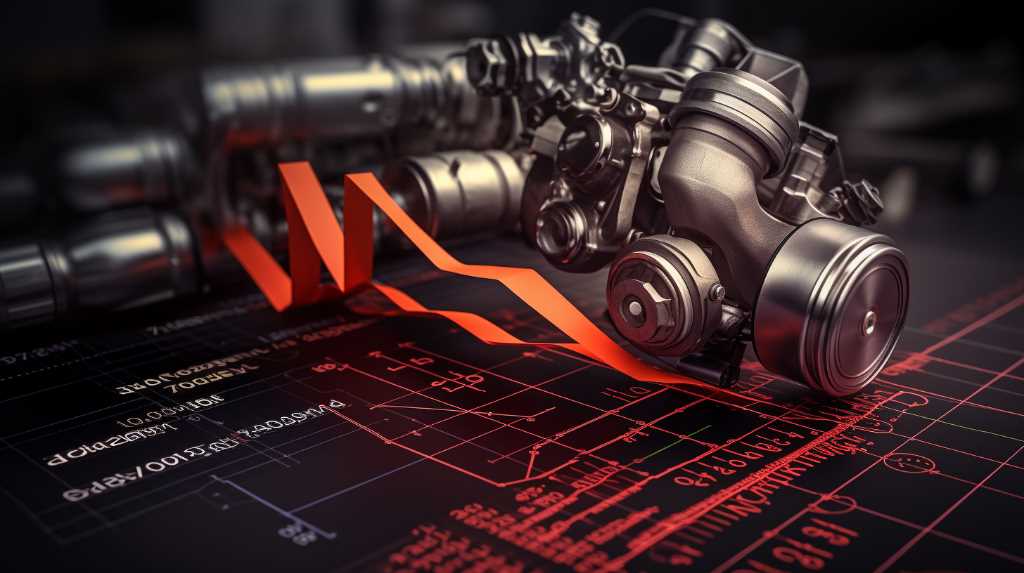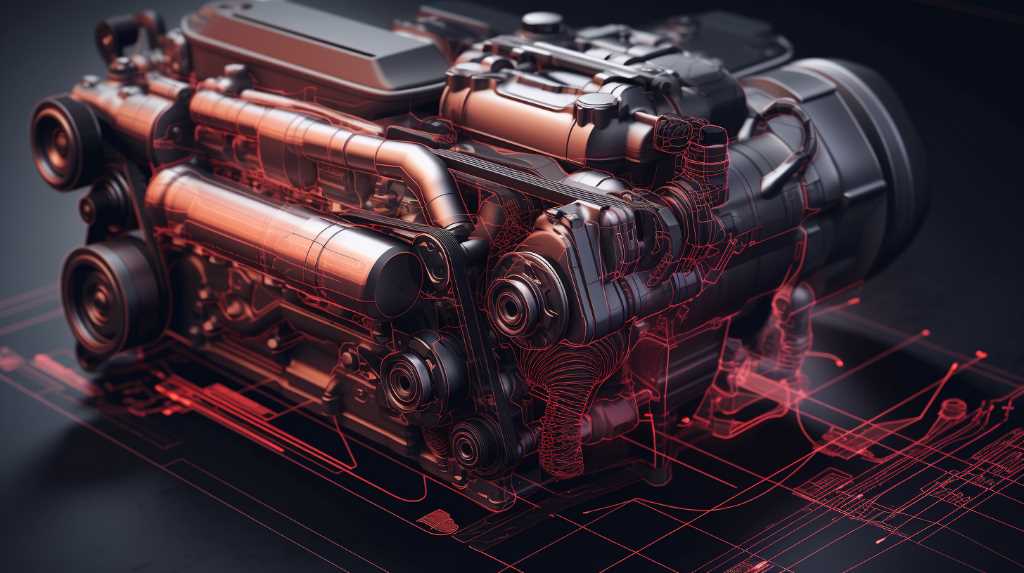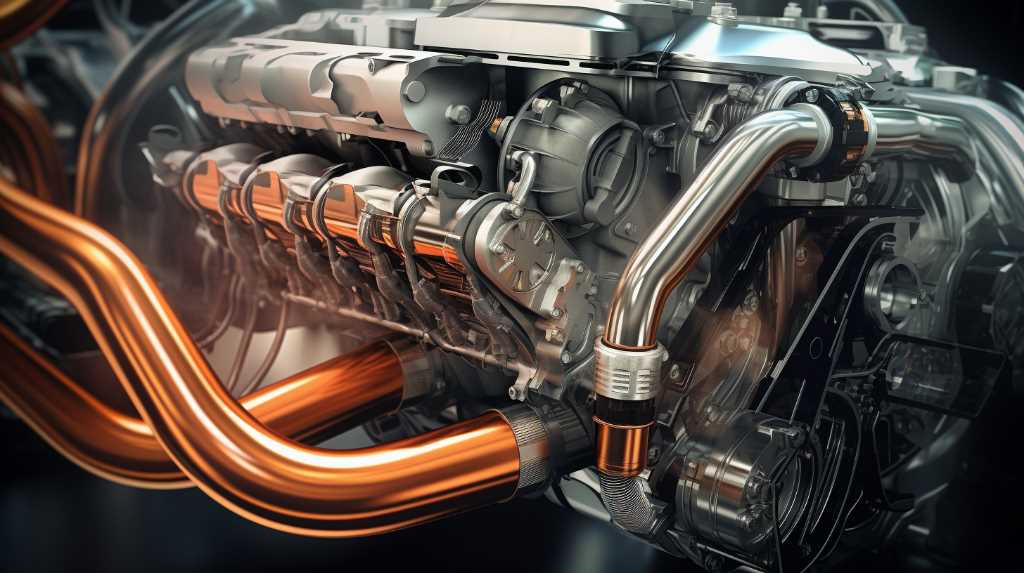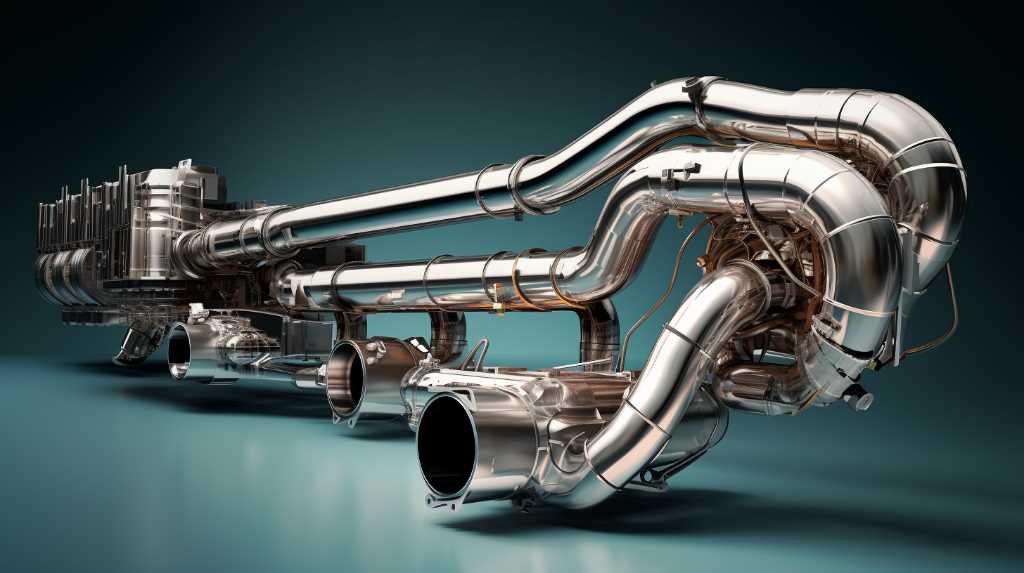Looking to upgrade your vehicle’s exhaust system? Discover the economic benefits of performance exhaust systems in terms of ROI and fuel efficiency. This article explores the importance of these systems and how to evaluate potential savings. Compare stock exhaust systems to performance upgrades and consider aftermarket components for long-term cost savings. By analyzing ROI and fuel efficiency, you can make an informed decision about investing in a performance exhaust system.
Key Takeaways
- Performance exhaust systems optimize the flow of exhaust gases, increasing horsepower, torque, and overall power.
- Upgrading to a performance exhaust system may have a high initial cost but offers long-term savings, including improved fuel efficiency and potential increase in resale value.
- Performance exhaust systems improve fuel combustion and increase fuel efficiency, although real-world impact on MPG varies.
- The cost of a performance exhaust system includes the initial purchase price, installation costs, brand, material, design, and additional features.
The Importance of Performance Exhaust Systems

If you want to improve your vehicle’s performance and fuel efficiency, it’s important to consider upgrading to a performance exhaust system. A performance exhaust system is designed to optimize the flow of exhaust gases from your engine, resulting in several benefits.
First and foremost, it can increase horsepower and torque, giving your vehicle a noticeable boost in acceleration and overall power. By allowing the engine to expel exhaust gases more efficiently, a performance exhaust system reduces backpressure, which can otherwise hinder the engine’s performance.
A performance exhaust system can also enhance fuel efficiency by improving the engine’s ability to breathe. With better airflow, the engine can burn fuel more completely, resulting in better combustion and increased fuel efficiency.
Moreover, a performance exhaust system can also enhance the sound of your vehicle, giving it a deeper, more aggressive tone. So, not only will you experience improved performance and fuel efficiency, but you’ll also enjoy a more satisfying driving experience.
Understanding Return on Investment (ROI)

To understand the return on investment (ROI) of upgrading to a performance exhaust system, you need to consider the potential financial benefits it can provide. While the initial cost of purchasing and installing a performance exhaust system may seem high, it’s important to look beyond the upfront expenses and consider the long-term savings it can offer.
One of the main financial benefits of a performance exhaust system is improved fuel efficiency. By replacing your stock exhaust system with a performance one, you can reduce the amount of back pressure on the engine, allowing it to breathe more freely and efficiently. This can lead to increased fuel economy and ultimately save you money at the pump. Over time, the savings in fuel costs can offset the initial investment of the performance exhaust system.
Additionally, a performance exhaust system can increase the resale value of your vehicle. Many car enthusiasts are willing to pay a premium for a vehicle with high-performance upgrades. By installing a performance exhaust system, you can make your vehicle more attractive to potential buyers in the future, increasing its value and potentially recovering some of the initial investment.
Evaluating Fuel Efficiency Benefits

When evaluating the fuel efficiency benefits of performance exhaust systems, there are two important points to consider. First, you need to compare the cost of the system with the potential savings in fuel consumption. Next, it’s crucial to understand the real-world impact on miles per gallon (MPG) that the exhaust system can provide.
Cost Vs. Savings
You can evaluate the fuel efficiency benefits of performance exhaust systems by comparing the cost versus the potential savings. When considering the cost of a performance exhaust system, it’s important to factor in both the initial purchase price and any installation costs. However, the potential savings can be significant.
Performance exhaust systems are designed to improve the flow of exhaust gases, which can lead to better fuel combustion and increased fuel efficiency. By improving fuel efficiency, you can save money on fuel costs in the long run. Additionally, performance exhaust systems can enhance engine performance, allowing your vehicle to operate more efficiently overall.
While the initial cost may seem high, the potential savings in fuel costs and improved engine efficiency make performance exhaust systems a worthwhile investment.
Real-world MPG Impact
Evaluate the fuel efficiency benefits of performance exhaust systems by assessing their real-world impact on MPG. When it comes to improving your vehicle’s fuel efficiency, a performance exhaust system can make a significant difference. By increasing the exhaust flow and reducing back pressure, these systems allow the engine to breathe more easily, resulting in improved fuel combustion and increased power.
As a result, you can expect to see an increase in miles per gallon (MPG) in real-world driving conditions. However, the actual impact on MPG will vary depending on various factors such as driving habits, vehicle type, and engine size. While some drivers may experience a noticeable improvement in fuel efficiency, others may see a more modest increase. It’s important to consider these factors and weigh the potential MPG benefits against the cost of the performance exhaust system before making a decision.
Calculating Potential Savings
If you’re looking to see how much you can save with a performance exhaust system, it’s important to calculate your potential savings. By determining the difference in fuel efficiency between your current exhaust system and the performance exhaust system, you can estimate how much money you could potentially save on fuel costs.
To calculate your potential savings, start by finding the average fuel consumption of your vehicle with the current exhaust system. This can be done by recording the number of miles driven and the amount of fuel consumed over a period of time.
Next, install the performance exhaust system and repeat the process, recording the new fuel consumption.
Once you have the average fuel consumption for both systems, calculate the difference in fuel efficiency. This can be done by subtracting the fuel consumption with the performance exhaust system from the fuel consumption with the current exhaust system. The result will be the amount of fuel you save per mile driven.
To calculate your potential savings, multiply the fuel savings per mile by the number of miles you drive in a given time period. This will give you an estimate of how much money you could save on fuel costs with a performance exhaust system.
Keep in mind that other factors, such as driving habits and road conditions, can also affect fuel efficiency. However, by calculating your potential savings, you can get a general idea of the financial benefits of investing in a performance exhaust system.
Costs Associated with Different Performance Exhaust Systems
Additionally, the expenses associated with the installation labor shouldn’t be overlooked, as these can vary depending on the complexity of the system. Lastly, brand reputation can also play a role in pricing, as certain brands may command a higher cost due to their perceived quality and performance.
Cat-Back, Axle-Back System Costs
When comparing cost considerations between Catback and Axleback exhaust systems, the two primary factors are power output and price. Generally, a Catback exhaust system will deliver greater power than an Axleback system. However, this increased power comes with a higher price tag, and you need to decide if this additional cost is justified by the power gains. It’s worth noting that these power gains can vary across different vehicles.
In some instances, manufacturers only offer Axleback systems for certain models. This might be because the original system was efficient enough that replacing the entire piping wasn’t deemed necessary, resulting in a more cost-effective solution – the Axleback system. The factory muffler is often quite restrictive due to the need to reduce noise, which is where most of the power gain in a Catback versus Axleback comparison comes from.
Turbo Back Systems Costs
In contrast, a Turbo Back exhaust system will always provide more power than a Catback system, but it also costs significantly more as it involves replacing the entire exhaust system. Comparing Catback and Turbo Back isn’t exactly apples to apples, as the Turbo Back system replaces the downpipe, catalytic converter and Catback, making it a much more comprehensive – and expensive – upgrade. Only turbocharged vehicles can opt for a Turbo Back exhaust system.
Header Back Exhaust System Costs
When considering full performance system costs such as a header back exhaust system, it’s crucial to understand that while they may provide the most significant power gains, they also come with the highest price tags. Therefore, it’s essential to evaluate whether the performance boost justifies the increased expenditure.
Factors Influencing Performance Exhaust System Costs

When considering the factors that influence performance exhaust system costs, there are a few key points to keep in mind. First, the quality of materials used in the construction of the system can have a significant impact on the overall cost.
Material Quality Impact
You should consider the durability of the material used in performance exhaust systems as it can greatly impact the overall costs. The quality of the material used in the construction of a performance exhaust system plays a significant role in determining its longevity and performance. High-quality materials, such as stainless steel or titanium, are more expensive upfront but offer long-lasting durability and resistance to corrosion. These materials are specifically designed to withstand the high temperatures, vibrations, and harsh conditions that exhaust systems are exposed to.
On the other hand, cheaper materials like mild steel or aluminized steel may be more affordable initially but can deteriorate quickly, leading to frequent repairs or replacements. By investing in a performance exhaust system made from high-quality materials, you can save money in the long run by minimizing maintenance and replacement costs.
Installation Labor Expenses
You should consider the installation labor expenses when calculating the total cost of a performance exhaust system. While the cost of the actual exhaust system components is an important factor, the labor expenses associated with installing the system can significantly impact the overall cost.
The complexity of the installation process can vary depending on the make and model of your vehicle, as well as the type of exhaust system you choose. In some cases, the installation may require specialized tools or equipment, which can increase the labor costs further. Additionally, the labor rates charged by different mechanics or installation shops can vary, so it’s important to factor in these expenses when budgeting for your performance exhaust system.
Brand Reputation Influence
One major factor that can influence the cost of performance exhaust systems is the reputation of the brand and its impact on pricing. When it comes to performance exhaust systems, well-known brands with a strong reputation tend to charge higher prices for their products. This is because these brands have invested heavily in research and development, ensuring that their exhaust systems are of the highest quality and offer superior performance. Additionally, these brands often have a loyal customer base who are willing to pay a premium for their products.
On the other hand, lesser-known brands may offer similar performance at a lower price point, but they may not have the same level of brand recognition and customer trust. Ultimately, the brand reputation plays a significant role in determining the cost of performance exhaust systems.
Comparing Stock Exhaust Systems to Performance Upgrades

Upgrading your stock exhaust system to a performance upgrade can result in significant improvements in both horsepower and fuel efficiency. When comparing stock exhaust systems to performance upgrades, it’s important to consider several factors.
Firstly, stock exhaust systems are designed with cost-effectiveness in mind, which means they may sacrifice performance for affordability. On the other hand, performance upgrades are specifically designed to optimize airflow, resulting in improved horsepower and fuel efficiency.
Stock exhaust systems are typically restrictive, limiting the flow of exhaust gases and reducing engine performance. Upgrading to a performance exhaust system, such as a cat-back or axle-back system, can increase the diameter of the exhaust pipes and reduce restrictions, allowing for a more efficient and smoother flow of exhaust gases. This improved flow can lead to a noticeable increase in horsepower and torque.
Additionally, performance exhaust systems often incorporate advanced technologies such as mandrel bending and high-flow mufflers, which further enhance exhaust gas flow. These features can also contribute to improved fuel efficiency by reducing backpressure and allowing the engine to breathe more freely.
It’s worth noting that the extent of these improvements will vary depending on the specific vehicle and the performance upgrade chosen. Nevertheless, upgrading your stock exhaust system to a performance upgrade can potentially provide significant benefits in terms of both horsepower and fuel efficiency.
The Role of Aftermarket Exhaust Components

When considering aftermarket exhaust components, it’s important to understand their impact on performance and fuel efficiency. Upgrading your exhaust system can have several benefits for your vehicle. One of the main roles of aftermarket exhaust components is to improve the flow of exhaust gases, allowing for better engine performance. By reducing backpressure, these components help the engine breathe more efficiently, resulting in increased horsepower and torque. This improved performance can be particularly noticeable in high-performance vehicles or those with turbocharged engines.
Additionally, aftermarket exhaust components can also contribute to fuel efficiency. By improving the exhaust flow, these components can help the engine operate more efficiently. This means that less fuel is wasted, resulting in better gas mileage. While the fuel savings may not be significant, every little improvement can add up over time.
Moreover, aftermarket exhaust components can also enhance the overall driving experience. They can give your vehicle a deeper, more aggressive sound, making it sound more powerful and sporty. This can be a great benefit for car enthusiasts who want to enhance the aesthetics and sound of their vehicles.
Considering Long-Term Benefits and Cost Savings

Maximizing the long-term benefits and cost savings of performance exhaust systems requires careful consideration of various factors. When evaluating the potential cost savings, it’s important to take into account the improved fuel efficiency that a performance exhaust system can provide. By optimizing the exhaust flow and reducing back pressure, these systems allow your engine to breathe more efficiently, resulting in better fuel combustion and ultimately, improved fuel economy.
In addition to fuel efficiency, performance exhaust systems can also contribute to the longevity of your vehicle. By reducing the strain on the engine and exhaust components, these systems help to minimize wear and tear, leading to reduced maintenance and repair costs in the long run. The high-quality materials used in aftermarket exhaust systems also tend to be more durable and resistant to corrosion, further extending their lifespan.
Furthermore, performance exhaust systems can enhance the overall driving experience, making it more enjoyable and comfortable. The improved exhaust note and throttle response can provide a sense of satisfaction and pleasure while driving, ultimately adding value to your ownership experience.
Considering all these factors, investing in a performance exhaust system can prove to be a wise decision in terms of long-term benefits and cost savings. However, it’s important to carefully research and choose a system that’s compatible with your vehicle and meets your specific needs and preferences.
Making an Informed Decision: ROI and Fuel Efficiency Analysis

Are you wondering how to determine the ROI and fuel efficiency of a performance exhaust system? Making an informed decision requires conducting a thorough analysis of these factors.
When it comes to ROI, you need to consider the initial cost of the performance exhaust system and the potential increase in the value of your vehicle. Performance exhaust systems are known to enhance the overall performance and appeal of a car, which can attract potential buyers and increase its resale value. By comparing the initial cost with the potential increase in value, you can calculate the return on investment.
Fuel efficiency is another important aspect to consider. Performance exhaust systems are designed to optimize the flow of exhaust gases, resulting in improved engine efficiency. This increased efficiency can lead to better fuel economy, saving you money at the pump in the long run. To determine the fuel efficiency of a performance exhaust system, you can compare the average fuel consumption before and after installation. Keep in mind that individual driving habits and conditions can also impact fuel efficiency.
Frequently Asked Questions
How Do Performance Exhaust Systems Affect the Overall Performance of a Vehicle?
Performance exhaust systems can improve the overall performance of your vehicle. They enhance the engine’s efficiency, allowing for better airflow and increasing horsepower. This upgrade can also provide a deeper and more aggressive sound, adding to the overall driving experience.
Are There Any Potential Drawbacks or Risks Associated With Installing a Performance Exhaust System?
There can be potential drawbacks or risks associated with installing a performance exhaust system. These may include increased noise levels, potential damage to the engine or emission system, and potential voiding of warranties.
Can Installing a Performance Exhaust System Void the Vehicle’s Warranty?
Installing a performance exhaust system can potentially void your vehicle’s warranty. It’s important to check with your manufacturer and read the warranty terms carefully before making any modifications to your vehicle.
Are Performance Exhaust Systems Suitable for All Types of Vehicles?
Performance exhaust systems are not suitable for all types of vehicles. It depends on factors like your vehicle’s engine size and design. Consulting with a professional is essential to ensure compatibility and optimal performance.
How Often Should a Performance Exhaust System Be Maintained or Replaced?
You should regularly maintain and replace your performance exhaust system to ensure optimal performance. Neglecting maintenance can lead to decreased fuel efficiency and potential damage to your vehicle.
Conclusion
In conclusion, investing in a performance exhaust system can provide a significant return on investment in terms of both improved fuel efficiency and enhanced vehicle performance. By considering factors such as potential savings, costs, and long-term benefits, you can make an informed decision that maximizes your ROI. So, if you’re looking to optimize your vehicle’s performance while saving on fuel costs, a performance exhaust system is definitely worth considering.
Related Articles
Be sure to also check out these articles right here at Motion Performance Motorsports
The Ultimate Guide to Performance Car Exhaust Systems
Next Exhaust Article: Track-Ready Exhausts: What Racers Need to Know About Performance Exhaust Systems
Previous Exhaust Article: Installation 101: How to Install a Performance Exhaust System at Home

Hey there, I’m Terra Frank, the driving force behind Motion Performance Motor Sports. I’m thrilled to have you here, exploring the fascinating world of cars, trucks, and everything related to automotive performance and accessories.




